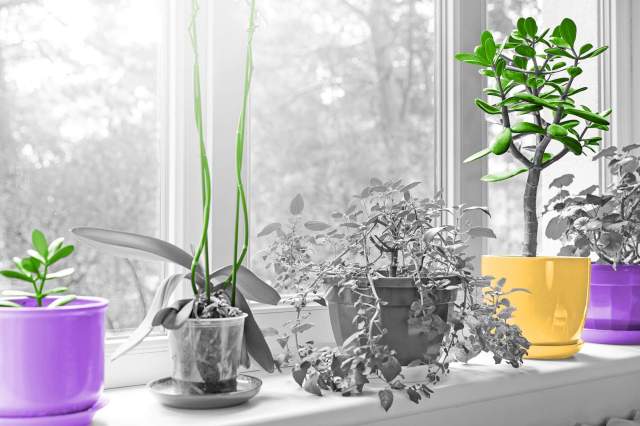
Lucky Bamboo Is Not Real Bamboo
Lucky bamboo has great cultural significance, especially when given as a gift or placed to improve feng shui. It’s often sold in stunning sculptural arrangements, like braids and twirls, and adorned with colorful ribbon, although it grows just fine as straight stalks in soil or plain water. Lucky bamboo thrives in all kinds of settings, and even does fine in low light, so it’s a mainstay of bookshelves and cubicles all over the world.
While it looks a little like true bamboo, it’s not related to the panda food. Its scientific name is Dracaena sanderiana, and it’s more closely related to dragon trees, ti plants, and snake plants. Like real bamboo, it’s super easy to grow, but unlike real bamboo, it’s not going to invade your entire garden.

Poaching a Venus Flytrap Is a Felony
Venus flytraps are incredibly popular houseplants for both pest control and sheer curiosity appeal, but in the wild, their habitat is itty-bitty. They grow only in a 75-mile radius in damp savannas, mostly located in North Carolina, and they’re in danger of losing their very specific habitat, which needs fire to thrive. Venus flytraps are considered a “species of special concern” in North Carolina, and people digging them up for use as houseplants is a major threat to their population. As of 2015, only about 35,000 of them were left growing in the wild.
In 2014, the state made poaching them a felony, punishable by up to 29 months in prison and steep fines. The U.S. Fish and Wildlife Service recommends checking flytraps before you buy them; plants grown in a nursery will likely be consistent in size and have uniform soil free from weeds.

Citrus Plants Can Grow Indoors
Those of us who don’t live in perpetually sunny climates may not be able to grow lime trees in our backyards, but that doesn’t mean giving up on a citrus tree dream. In colder climates, many varieties make great houseplants, as long as they’re a variety that takes to it; you’re not going to grow a giant orange tree in your living room, but dwarf trees can be a great option near sunny windows. Acidic fruits, like lemons and limes, need less heat to ripen, making them slightly better candidates for indoor growing, but some varieties of satsuma, citron, and kumquat are also great choices. Speaking of fruit…
More Interesting Reads

Monstera Plants Produce Tasty Tropical Fruit
As a houseplant, Monstera deliciosa (also known as split-leaf philodendron or Swiss cheese plant) is better known for its giant, heart-shaped leaves marked by beautiful patterns of notches and holes. Indoors, they typically stop there, but in their native Central American tropical forests, these already larger-than-life plants eventually climb nearby trees and reach heights of up to 70 feet, with large blossoms that resemble peace lilies. Eventually, those flowers become scaly fruit that tastes like a cross between a banana, pineapple, and mango — hence, deliciosa.

Resurrection Plants Can Go Seven Years Without Water
Even for those who have never been able to keep a houseplant alive, Selaginella lepidophylla — also known as a resurrection plant, the Rose of Jericho, or, confusingly, the False Rose of Jericho — is a pretty low lift. They’re native to the Chihuahuan Desert in northern Mexico and parts of Texas, New Mexico, and Arizona, and have an incredible survival strategy for the dry heat. They allow themselves to dry out, and then bounce around as tumbleweeds until they find somewhere damp to settle down. Once hydrated, they spread out their fern-like fronds and turn green. If that area dries out, they just curl back up into a ball and repeat the cycle. Once dormant and dead-looking again, the plant can survive for up to seven years.
Selaginella lepidophylla does not need to be rooted to come back to life, and it only takes a couple of hours to go from dormant to vibrant. As houseplants, they are nearly impossible to kill. Just make sure nobody mistakes them for actually being dead — their biggest household hazard is becoming accidental trash.

Some Orchids Use Trickery To Reproduce
Orchids are bizarre plants, and there are a lot of them. With more than 25,000 varieties, they make up around 10% of the world’s plant species, and many of them have their own set of tricks. When it’s time to spread pollen, a number turn to mimicry to lure in beneficial insects. Some release pheromones that smell like female insects, while others go so far as to visually imitate their pollinators — that is, specialized petals lure in male bees or wasps, who “mate” with the flower before moving onto another, picking up pollen in the process.












